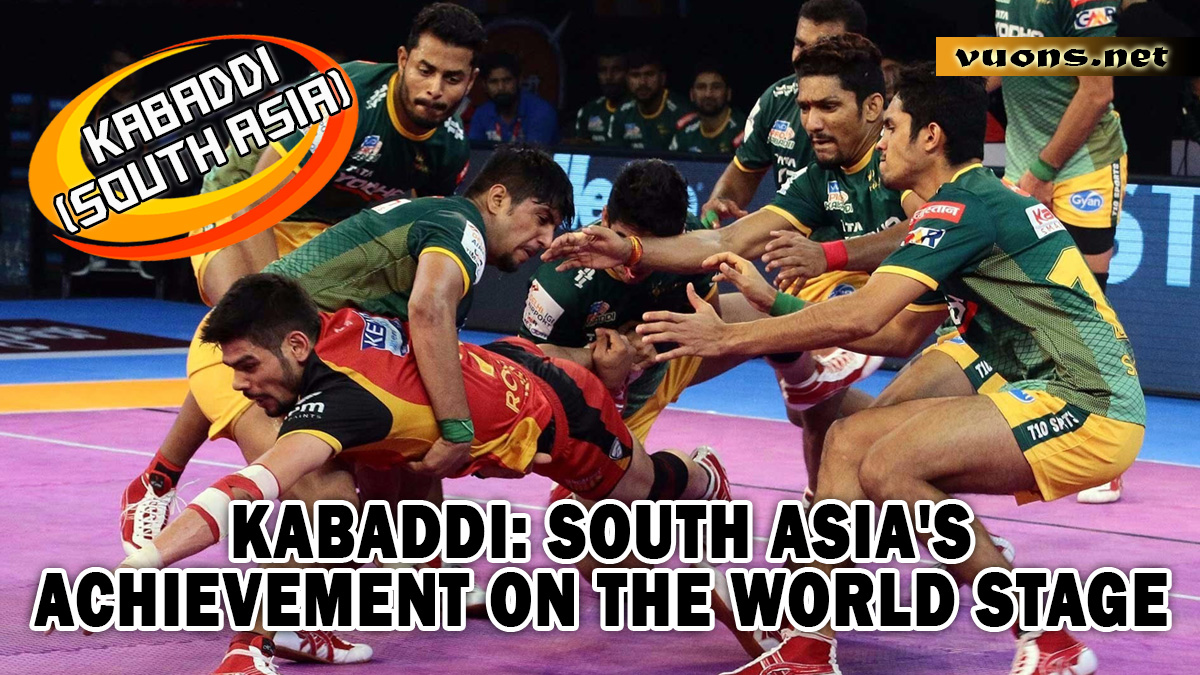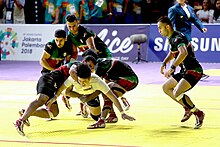Evolution of Kabaddi: From Tradition to Modern Sport
The Origins of Kabaddi: A Cultural Heritage of South Asia
Evolution of Kabaddi: From Tradition to Modern Sport – Kabaddi is one of the oldest sports originating from South Asia, with a history estimated to be over 4,000 years old. The Sport is not just a game, but also reflects the lifestyle and philosophy of the people of the region. In ancient texts such as the Mahabharata, there are references to kabaddi-like activities, depicting physical strength, agility, and teamwork.
Kabaddi was originally played in rural areas as a way to practice survival skills and physical strength. In villages, the game became a symbol of courage and strategy, often played during festivals or community celebrations. Apart from being a form of entertainment, kabaddi is also seen as a way to strengthen social ties in the community.
The name “Kabaddi” itself is believed to have originated from the Tamil language, meaning “holding hands.” In some regions such as Punjab and Maharashtra, variations of kabaddi have local names such as “Hu-Tu-Tu” and “Chedugudu.” Despite the different names, the essence of the game remains the same: combining speed, strategy, and endurance.
Kabaddi began to gain international recognition when it was organized as an official tournament in the early 20th century. India played a major role in spreading the sport, making it a part of the Asian Games since 1990. Its popularity has continued to grow with competitions such as the Pro Kabaddi League, which has attracted global attention.
To this day, kabaddi remains an important part of South Asia’s cultural identity, connecting ancient traditions with the spirit of modern sport.
Kabaddi’s Transformation from Village Game to International Competition
Kabaddi began as a traditional game in South Asian villages that relied on physical strength, agility, and teamwork. In many rural communities, kabaddi was played to practice survival skills and build social solidarity. The game was usually played in a field with simple rules that were passed down from generation to generation.
Over time, kabaddi began to evolve from a village activity to a more organized sport. In the 1920s, India began to standardize the rules of the game to make it a competition that could be participated by all groups. This effort was followed by the formation of the Indian Kabaddi Federation in the 1950s, which took the sport to the national level.
Kabaddi gained international momentum when it was included in the Asian Games in 1990. This was a major milestone that introduced kabaddi to a global audience. India, as a major pioneer, has dominated the international kabaddi arena and continues to promote the sport in various countries.
The popularity of kabaddi has increased with the introduction of the Pro Kabaddi League in 2014. The league has not only provided a platform for kabaddi athletes but has also attracted media attention and big sponsors. With its modern format and state-of-the-art broadcasting technology, the Pro Kabaddi League has brought kabaddi to the living rooms of millions of viewers around the world.
From the rural fields to the international stage, kabaddi has shown its evolution as a sport that respects its traditional roots while adapting to the modern era.
The Impact of Pro Kabaddi League on Global Popularity
The Pro Kabaddi League (PKL) has been one of the major catalysts in elevating kabaddi from a traditional sport to a global spectacle. Launched in 2014 in India, the PKL introduced kabaddi to a modern format that combines entertainment and high-level competition. The league uses a professional approach similar to major sports leagues such as the IPL (Indian Premier League), complete with a player auction system, franchise teams, and media support.
One of the main attractions of the PKL is its dynamic visual presentation, with state-of-the-art broadcasting technology highlighting the speed and intensity of the game. Instant highlights, live analytics, and engaging graphics make kabaddi more accessible to new audiences, including those who have never watched the sport before.
The PKL has also become an important platform for kabaddi players from diverse backgrounds to shine at the national and international levels. Athletes from countries such as Iran, South Korea, and Kenya have participated in the league, helping to introduce kabaddi to a global audience. By integrating international players, the PKL builds the narrative of kabaddi as a cross-cultural sport.
Not only did PKL attract millions of viewers on television, it also gained immense popularity on digital platforms. Social media played a significant role in spreading iconic moments from the matches, creating a greater appeal for the sport.
To this day, the Pro Kabaddi League remains at the forefront of popularizing kabaddi as a global sport, making it not just a symbol of Indian tradition but also a modern sporting phenomenon.
Kabaddi at the Asian Games: A Leap to the Global Stage
Kabaddi was first introduced at the Asian Games in 1990 in Beijing, making it one of the traditional South Asian sports to make it to Asia’s biggest sporting event. The presence of kabaddi at the Asian Games was a significant step in introducing the sport to an international audience and cementing its place as part of the global sporting culture.
Since its inception, India has been a dominant force in kabaddi, winning consecutive gold medals until the 2014 edition. This dominance not only showcased the technical and physical superiority of Indian athletes but also highlighted the strong cultural roots of kabaddi in the country. Other countries such as Iran, South Korea and Pakistan have also started to show rapid progress, creating more interesting competition in the competition.
The Asian Games have also become a stage for kabaddi to adapt to international formats and standards. Changes in the rules, such as the introduction of technology to aid refereeing decisions, have given the sport a new dimension. Additionally, the more structured match format has helped make kabaddi more appealing and acceptable to a global audience.
The participation of non-traditional countries like Japan and Thailand in the Asian Games proves that kabaddi has now transcended its geographical boundaries. With this growth, kabaddi has become not only a competitive sport but also a symbol of cultural unification across Asia.
The Asian Games continues to play a vital role in bringing kabaddi to the world stage, paving the way for more countries to explore and participate in the sport.




